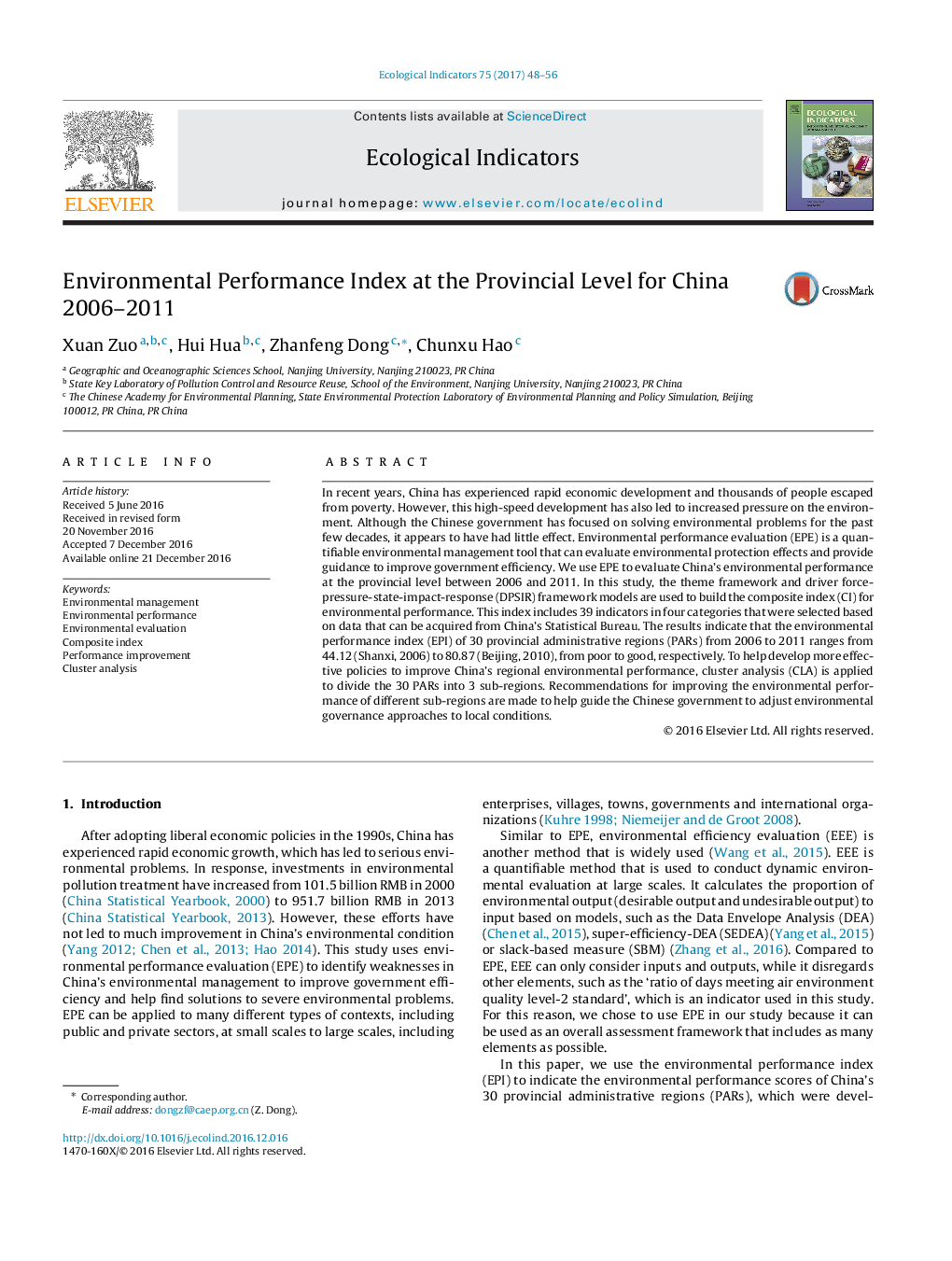| Article ID | Journal | Published Year | Pages | File Type |
|---|---|---|---|---|
| 5741796 | Ecological Indicators | 2017 | 9 Pages |
In recent years, China has experienced rapid economic development and thousands of people escaped from poverty. However, this high-speed development has also led to increased pressure on the environment. Although the Chinese government has focused on solving environmental problems for the past few decades, it appears to have had little effect. Environmental performance evaluation (EPE) is a quantifiable environmental management tool that can evaluate environmental protection effects and provide guidance to improve government efficiency. We use EPE to evaluate China's environmental performance at the provincial level between 2006 and 2011. In this study, the theme framework and driver force-pressure-state-impact-response (DPSIR) framework models are used to build the composite index (CI) for environmental performance. This index includes 39 indicators in four categories that were selected based on data that can be acquired from China's Statistical Bureau. The results indicate that the environmental performance index (EPI) of 30 provincial administrative regions (PARs) from 2006 to 2011 ranges from 44.12 (Shanxi, 2006) to 80.87 (Beijing, 2010), from poor to good, respectively. To help develop more effective policies to improve China's regional environmental performance, cluster analysis (CLA) is applied to divide the 30 PARs into 3 sub-regions. Recommendations for improving the environmental performance of different sub-regions are made to help guide the Chinese government to adjust environmental governance approaches to local conditions.
Graphical abstractDownload high-res image (162KB)Download full-size image
